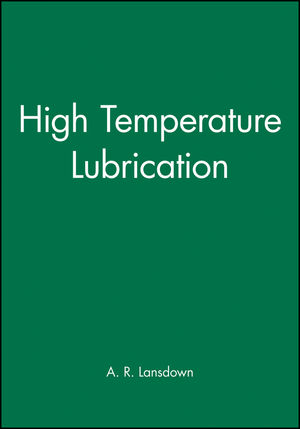High Temperature LubricationISBN: 978-0-85298-897-8
Hardcover
224 pages
June 2006
 This is a Print-on-Demand title. It will be printed specifically to fill your order. Please allow an additional 15-20 days delivery time. The book is not returnable.
|
||||||
High Temperature Lubrication is based on a study of lubrication at
high temperatures, the need for which was highlighted by a survey
of engineers in industry.
One of the first difficulties in discussing high temperature lubrication is the problem of defining what is a high temperature. In the context of grease lubrication, high temperature problems can arise at any temperature over 130?C; for the lubrication of vehicle engines, sump temperatures over 150?C are probably too high; solid lubrication of ceramics can be successful up to 100?C. It follows, then, that for the engineers and technologist for whom this book is written, a working definition for 'high temperature' can be taken to mean any temperature high enough to cause problems which would not arise at lower temperatures.
The aim of this book is to provide, in a simple form which can be easily understood by non-specialists, information which is of value to engineers faced with problems of lubrication at high temperatures, whether those temperatures are less than 140?C or greater than 1000?C. The various topics have been described in sufficient detail to enable an engineer to understand the factors involved in solving a high temperature lubrication problem without unnecessary complication.
One of the first difficulties in discussing high temperature lubrication is the problem of defining what is a high temperature. In the context of grease lubrication, high temperature problems can arise at any temperature over 130?C; for the lubrication of vehicle engines, sump temperatures over 150?C are probably too high; solid lubrication of ceramics can be successful up to 100?C. It follows, then, that for the engineers and technologist for whom this book is written, a working definition for 'high temperature' can be taken to mean any temperature high enough to cause problems which would not arise at lower temperatures.
The aim of this book is to provide, in a simple form which can be easily understood by non-specialists, information which is of value to engineers faced with problems of lubrication at high temperatures, whether those temperatures are less than 140?C or greater than 1000?C. The various topics have been described in sufficient detail to enable an engineer to understand the factors involved in solving a high temperature lubrication problem without unnecessary complication.



